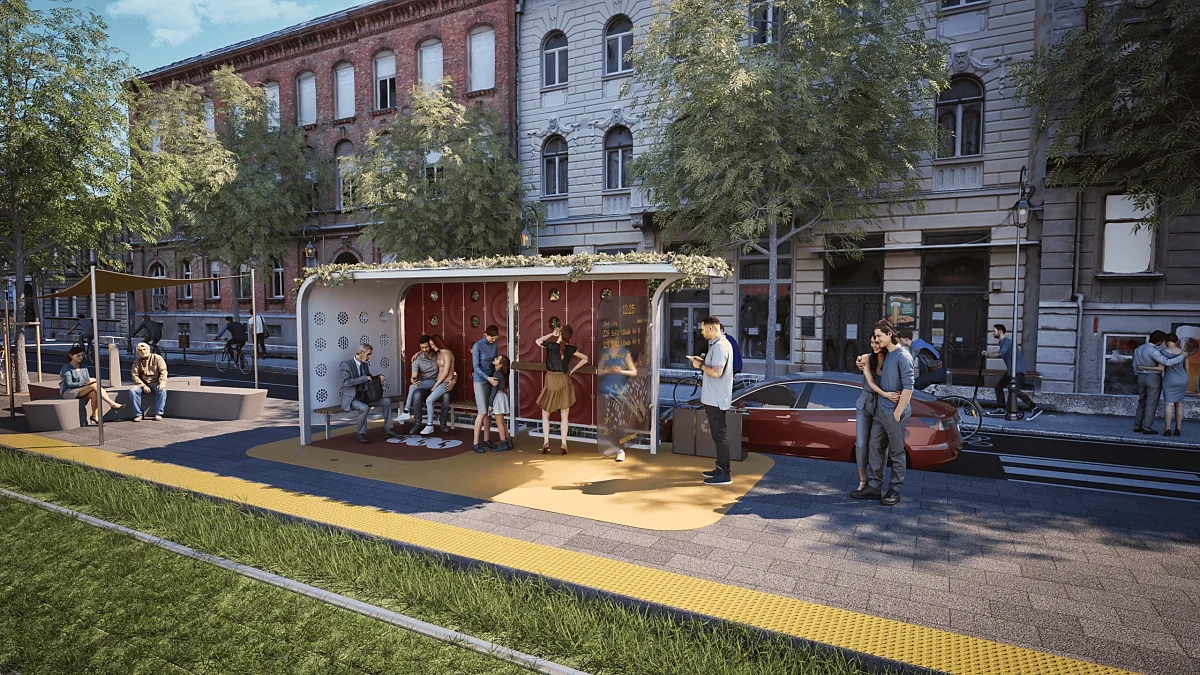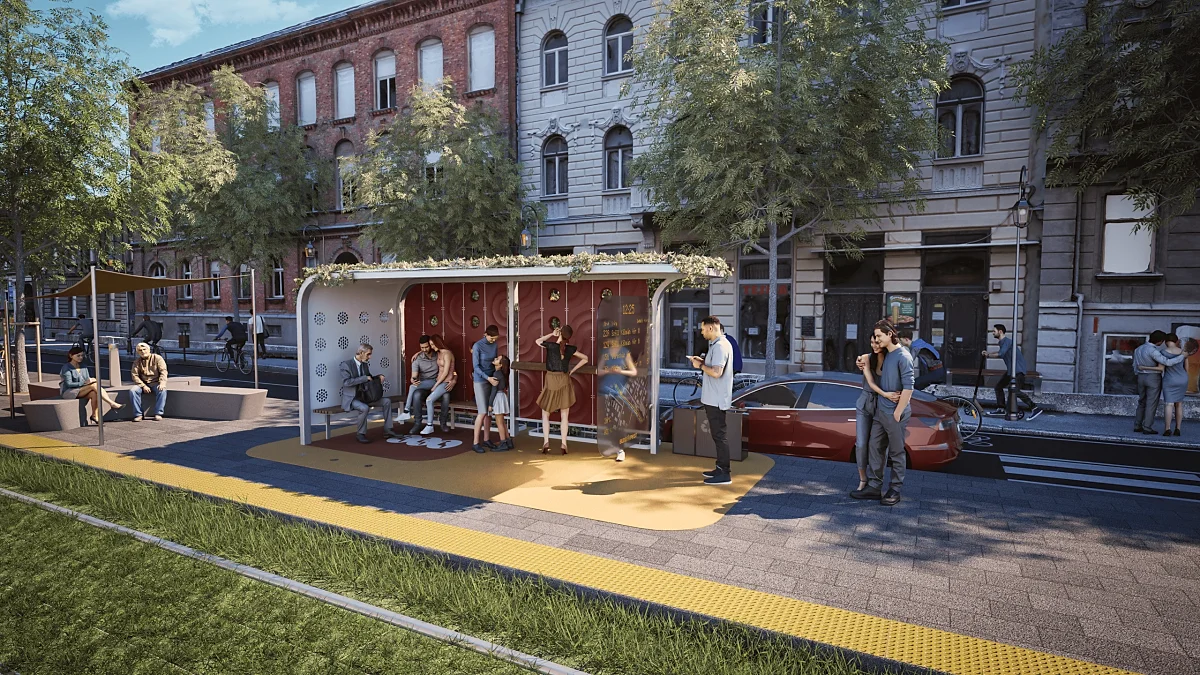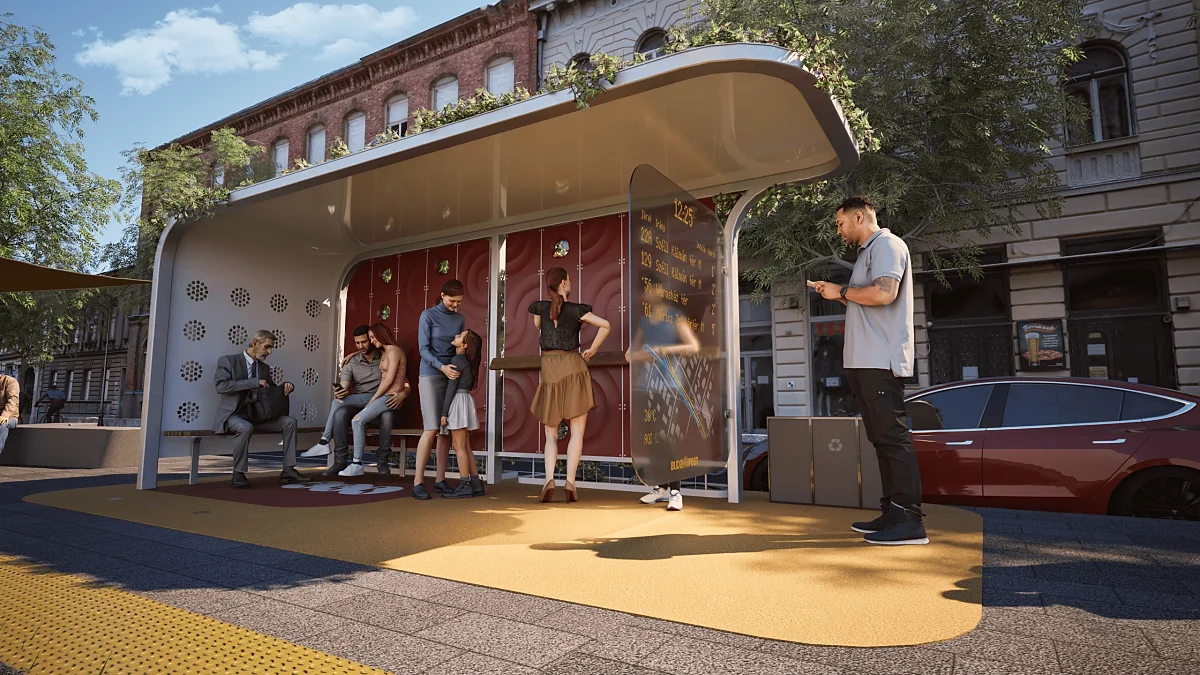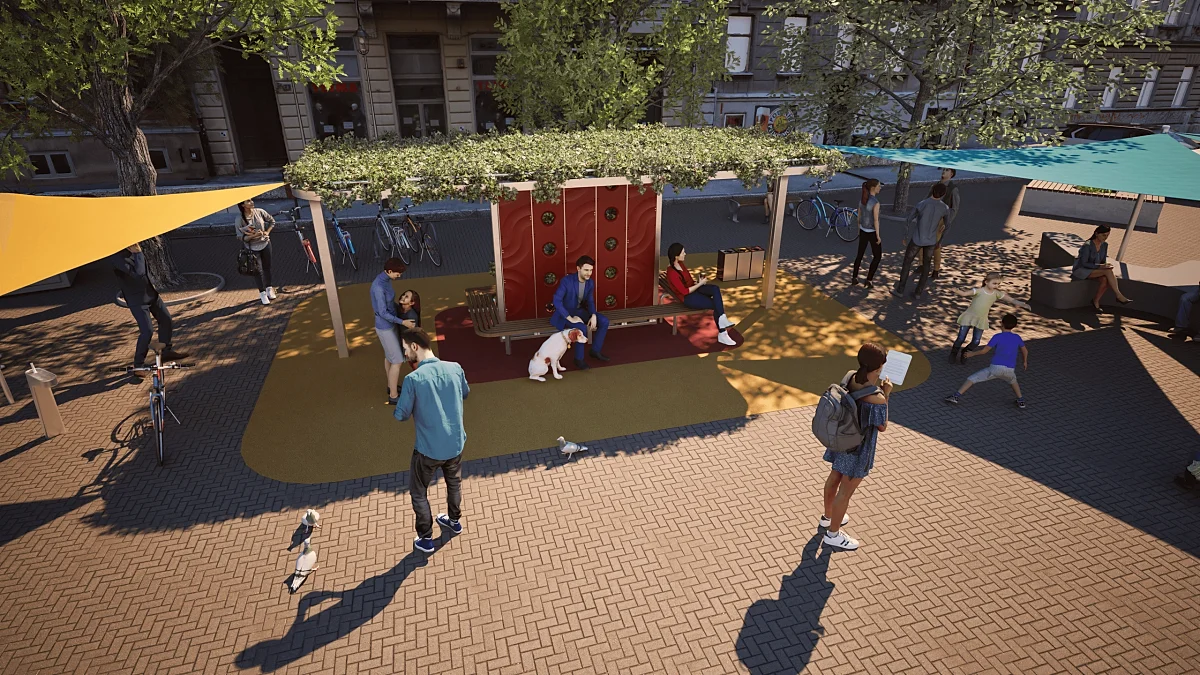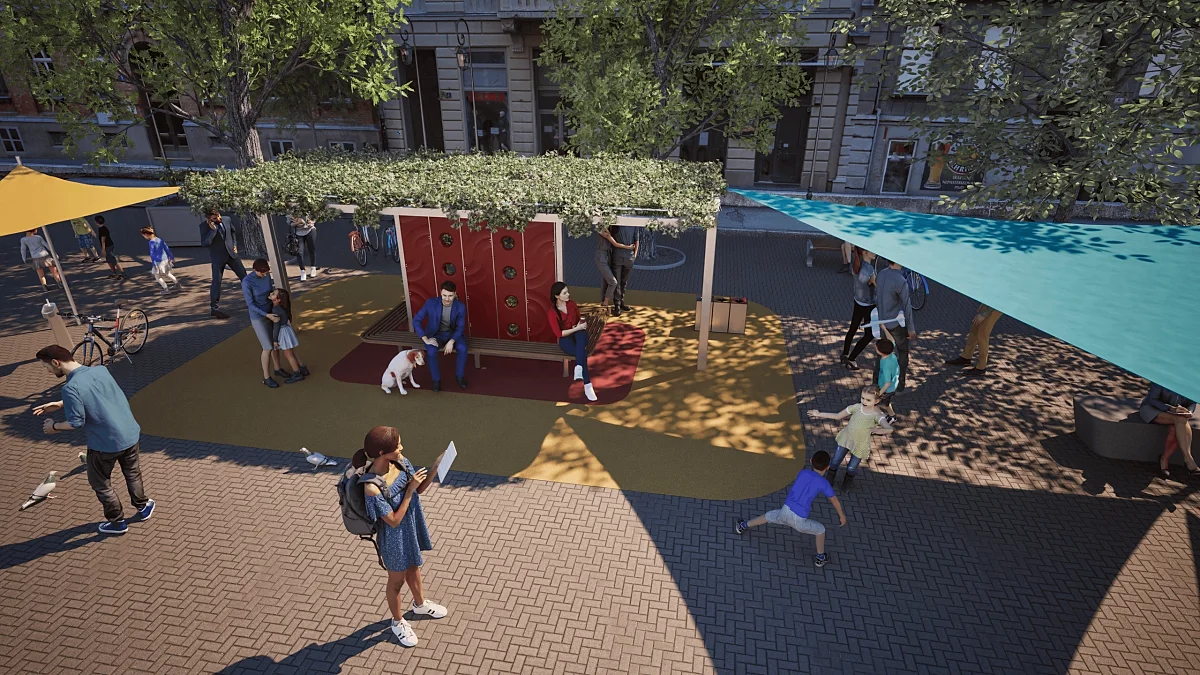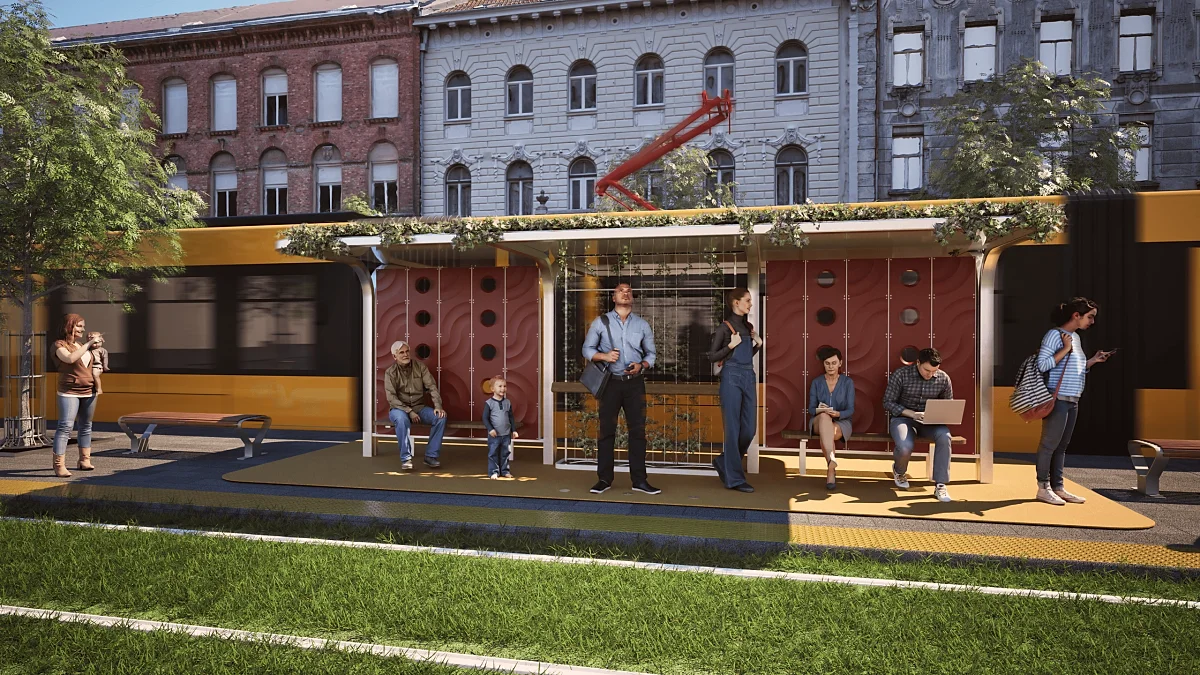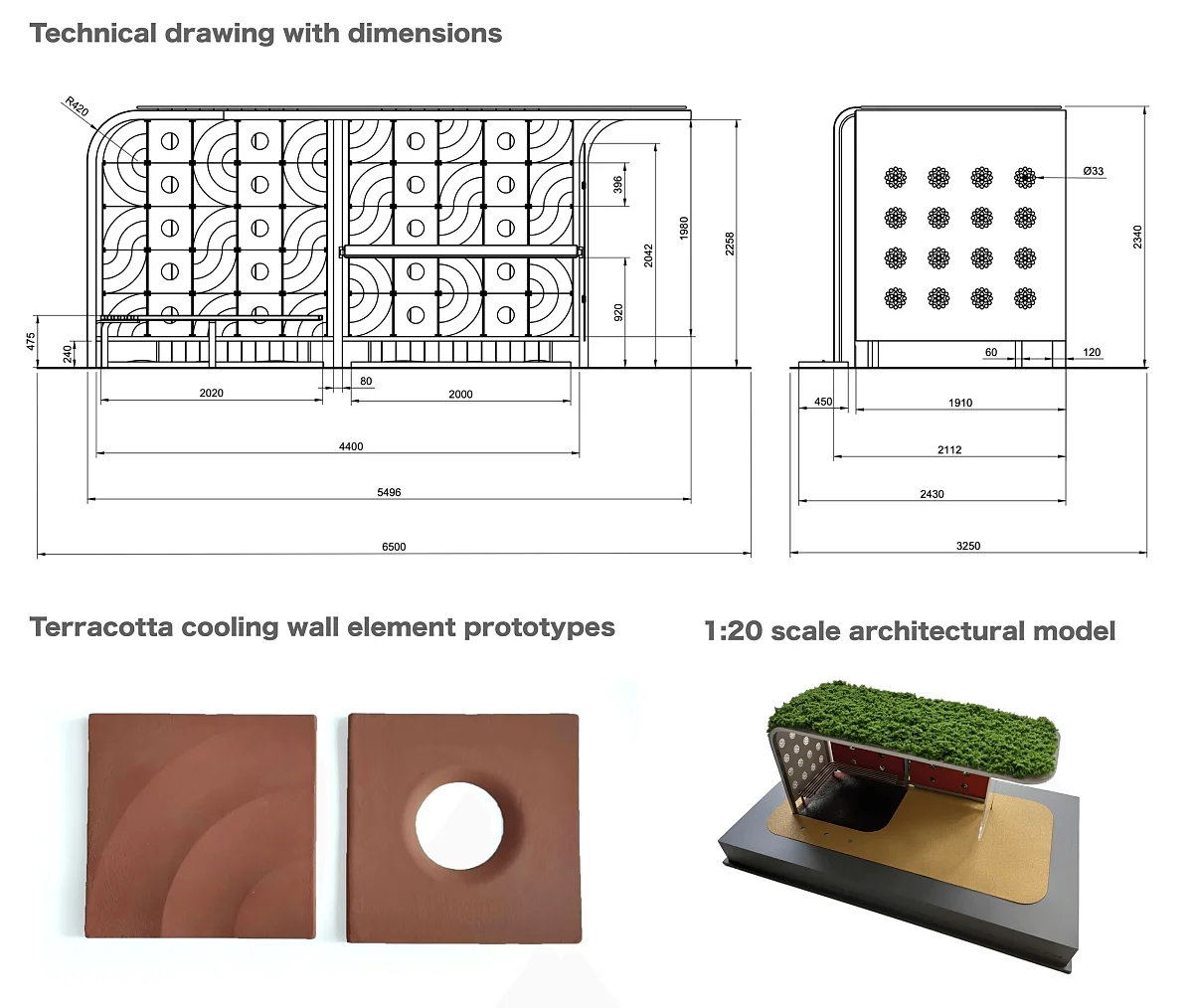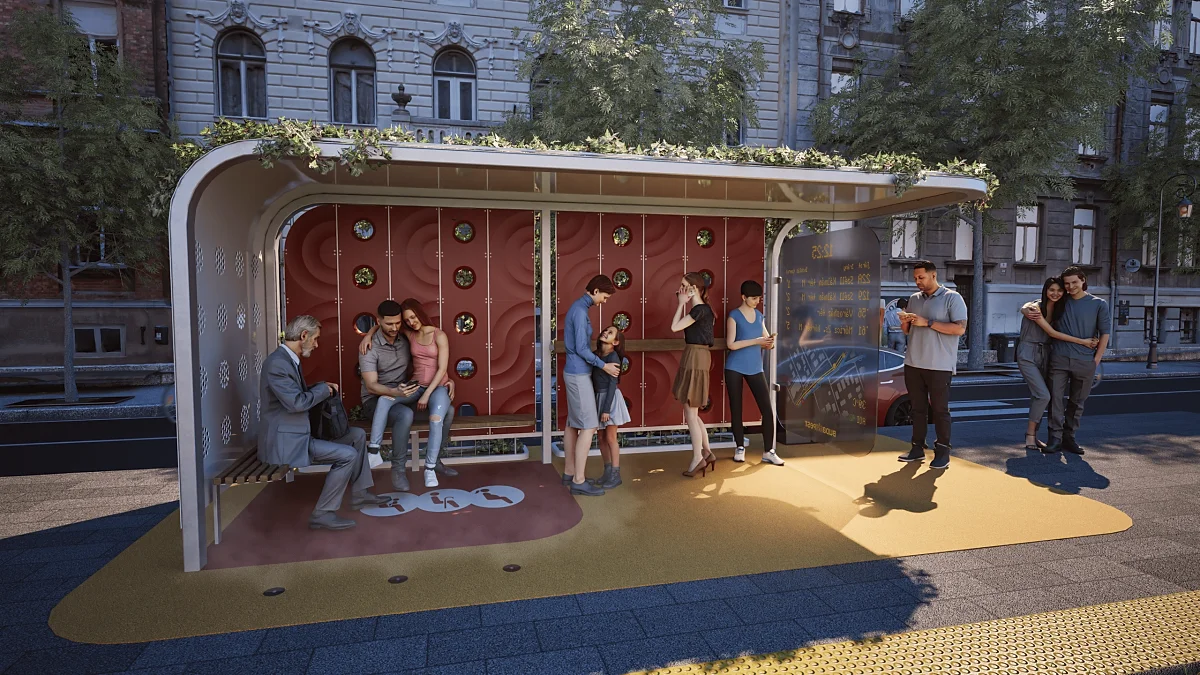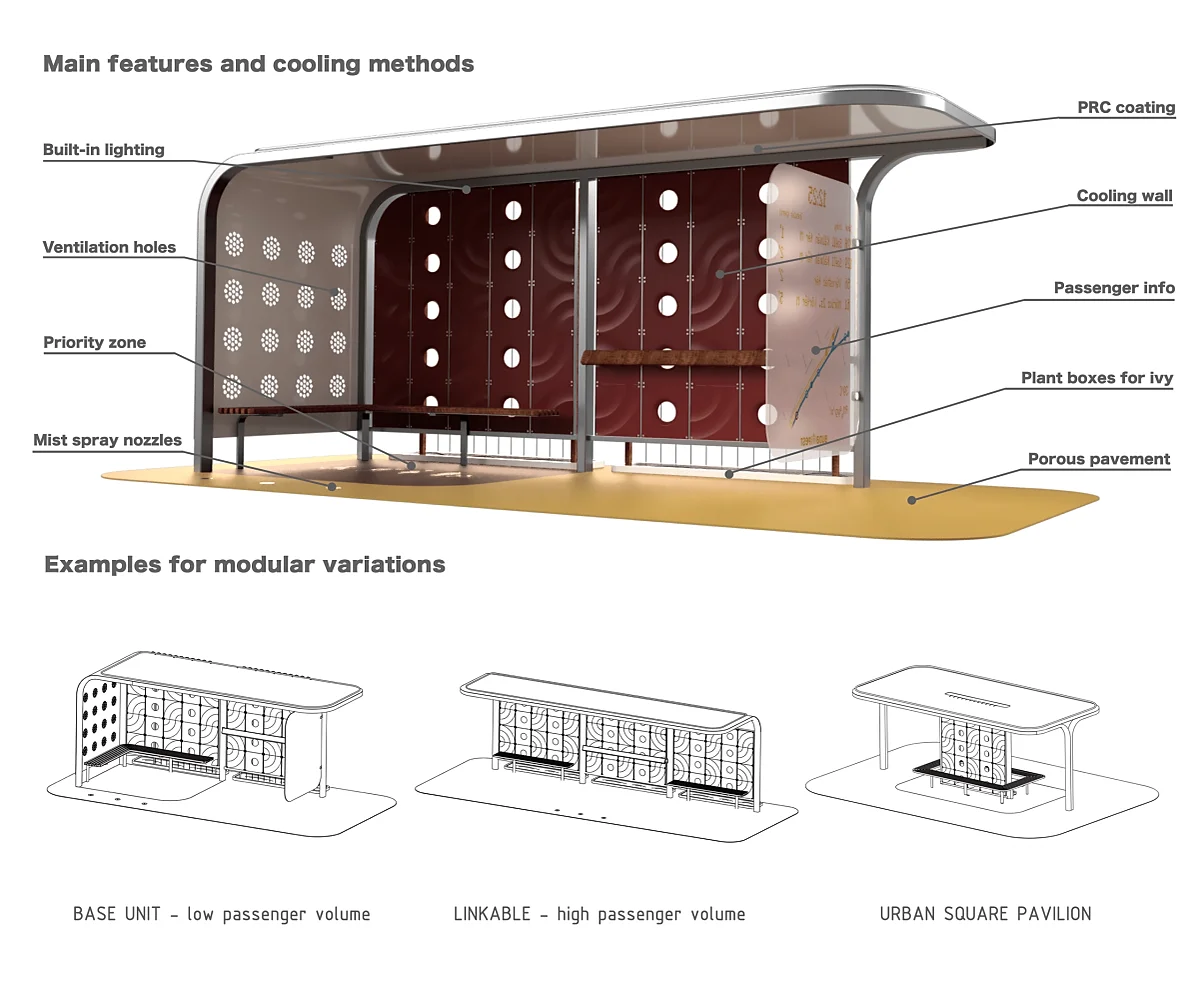Urban Oasis 2030
Ádám Gábor Teket: Urban Oasis 2030
Supervisor: Balázs Püspök
Consultant: Attila Bujdosó
Project Urban Oasis explores the urban heat island effect, a microclimatic phenomenon where densely built and artificially surfaced urban areas absorb and retain significantly more heat than their surroundings. Combined with increasingly intense summer heat waves, this exacerbates discomfort and has been shown to have adverse health effects, particularly among the elderly, children, and those with cardiovascular problems. Currently, air conditioning accounts for approximately 10% of global energy consumption, a figure expected to triple by 2050 due to the growing cooling needs of developing countries.
The project seeks to combat the urban heat island effect by redesigning transportation stops, waiting areas, and simple urban rest spots located in densely built inner-city districts that are particularly exposed to extreme heat. It proposes the creation of a modular pavilion system, incorporating various passive and low-energy shading and cooling solutions to mitigate the impact of heat in these urban environments. A terracotta cooling wall, a water storage area with porous pavement, water-saving high-pressure misting nozzles, ventilation holes to promote airflow and evaporative cooling, heat-reflective PRC coating, and greenery atop the shelters together can reduce local temperatures by up to 10°C without significant energy consumption to support the well-being of vulnerable groups, such as the elderly.
